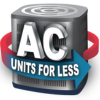Heating, Ventilation, and Air Conditioning (HVAC) systems are pivotal in maintaining a comfortable and healthy indoor environment. A critical, yet often overlooked component of these systems is the ductwork. Properly designed and maintained ductwork plays a significant role in the overall efficiency and effectiveness of HVAC systems.
What is Ductwork?
Ductwork refers to the network of tubes that distribute heated or cooled air throughout a building. It is a vital link between the HVAC system and indoor spaces. The efficiency of ductwork impacts how well an HVAC system performs its task of regulating indoor air temperature and quality.
The Impact of Ductwork Design on Efficiency
Optimal Design for Maximum Efficiency
The design of ductwork significantly influences HVAC efficiency. Ideally, ducts should have minimal bends and turns to allow for smoother airflow. The length of the ducts also matters; shorter ducts reduce the loss of energy. Additionally, the sizing of ducts must be accurately calculated based on the size of the building and the capacity of the HVAC system to ensure efficient air distribution.
Insulation and Sealing
Proper insulation of ducts is essential to prevent heat loss or gain as air travels through them. Insulated ducts maintain the temperature of the air, ensuring that it reaches the intended spaces with minimal thermal change. Sealing joints and connections in the ductwork prevents air leaks, which can significantly reduce HVAC efficiency.
Maintenance and Its Role in Efficiency
Regular Cleaning and Inspection
Regular maintenance, including cleaning and inspection of ductwork, is crucial. Accumulated dust and debris in ducts can obstruct airflow and reduce the system's efficiency. Inspections can identify any leaks, corrosion, or other issues that might compromise the system's performance.
Impact of Leaks and Obstructions
Leaks in ductwork are one of the leading causes of efficiency loss in HVAC systems. Even small leaks can lead to significant energy waste, as the system has to work harder to maintain the desired temperature. Similarly, obstructions in the ducts, such as improperly installed filters or collapsed sections, can impede airflow, further reducing efficiency.
Upgrading and Retrofitting Ductwork
The Benefits of Modern Ductwork Solutions
Older buildings often have outdated ductwork that may not meet current efficiency standards. Upgrading or retrofitting ductwork can lead to substantial improvements in HVAC performance. Modern materials and design techniques can enhance airflow, reduce leaks, and improve overall system efficiency.
Considerations for Retrofitting
When retrofitting ductwork, considerations include the age and layout of the building, existing HVAC system capabilities, and budget constraints. Professional assessment is necessary to determine the most effective approach to upgrading the ductwork.


